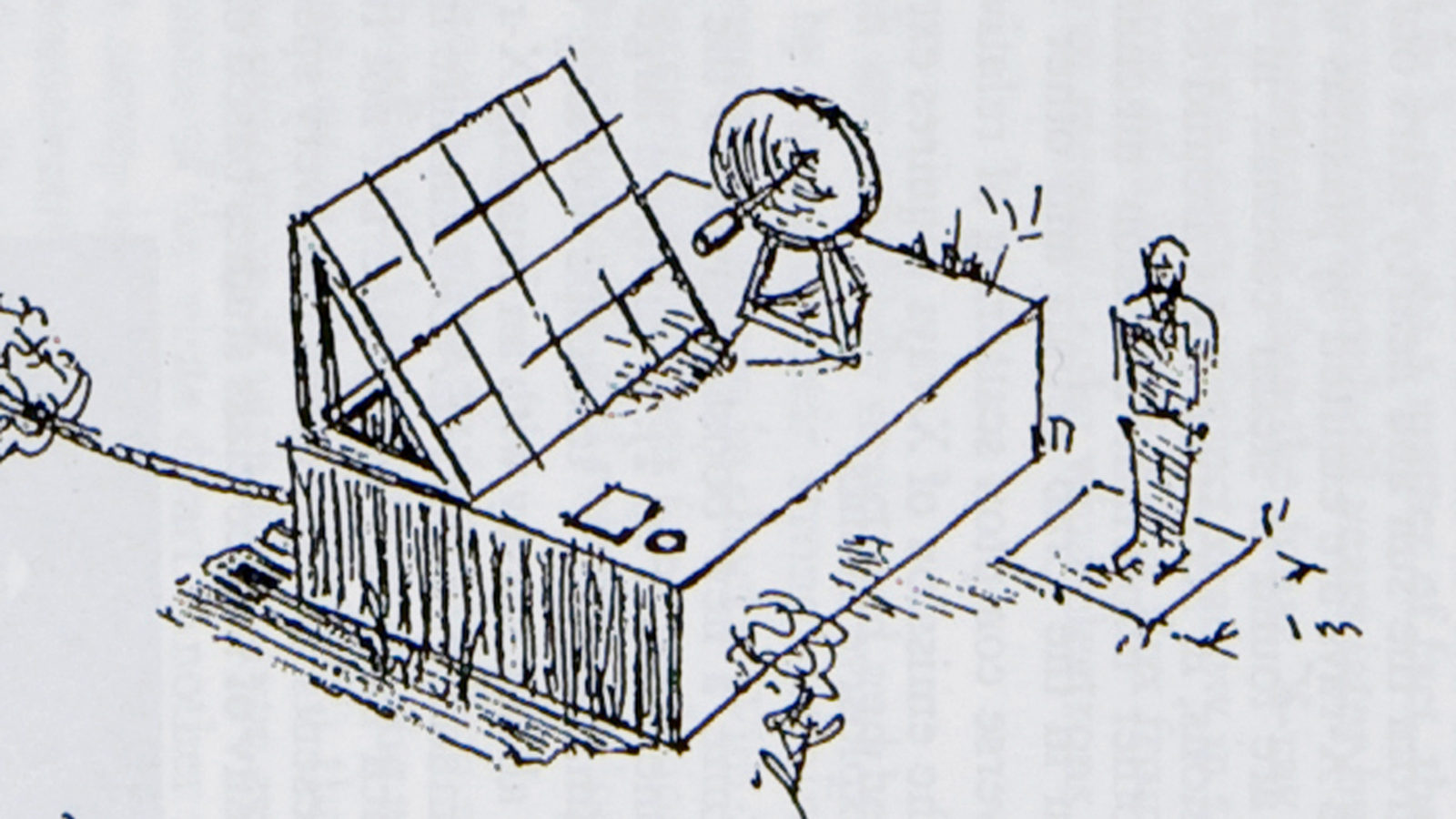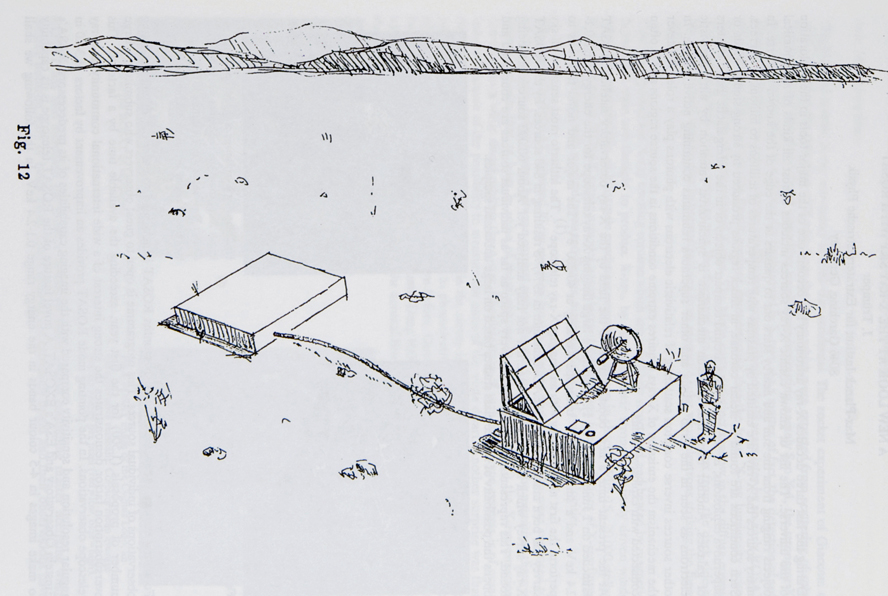Based on his conversations with Watson and other scientists, Cronin combined what he considered the best ideas and developed an ambitious conceptual design for an array of almost 3000 detector stations to be installed across an area larger than the state of Rhode Island.
To stimulate discussions with other scientists, Cronin distributed his concept through an Enrico Fermi Institute preprint, also published in the proceedings of a symposium held in Zuoz, Switzerland, in April 1992. This sketch, made by Richard Armstrong, head of the engineering group at the University of Chicago, is Figure 12 of the article. It shows one of the proposed detector stations, powered by a solar collector and communicating by microwave transmitter. The detector array would record the extensive showers of secondary particles produced by high-energy cosmic rays and transmit their data to a central receiver station.
Cronin and Watson became the co-leaders of the proposed project. In 1995, researchers met for six months at Fermi National Accelerator Laboratory to carry out a detailed design study. The design evolved: To reduce cost, researchers decided to use cylindrical, 3000-gallon tanks filled with water instead of the rectangular containers with scintillators depicted in the sketch.
When scientists began to discuss names and acronyms for the project, Cronin rejected all of them. Instead he chose to name the cosmic-ray observatory after Pierre Auger, who discovered air showers created by high-energy cosmic rays in 1938. I hate acronyms, Cronin says. People relate to the history of science much better than to an acronym.
In 1999, scientists broke ground for the Southern Pierre Auger Observatory in Argentina. Nine years later, the collaboration celebrated the inauguration of the project. Funding agencies in 19 countries contributed to the construction. Plans for a northern observatory in Colorado are under way.








